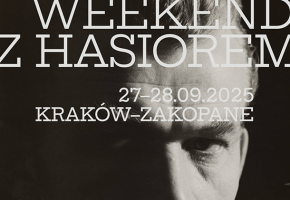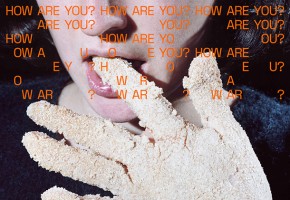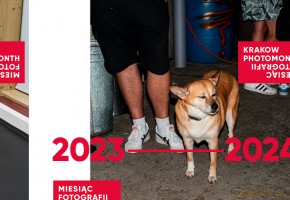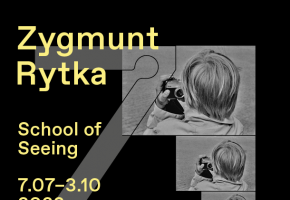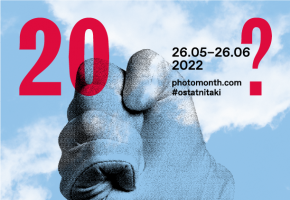„The Increased Difficulty of Concentration”- Polish photography show at Fotograf Festival in Prague and discussion with artists.
PANEL DISCUSSION with ARTISTS
14.10.2015, 7 pm
NG Bookstore – KOENIG BOOKS (Veletržní palace, Dukelských Hrdinů 530/47, 170 00 Prague 7)
Artists: Kaja Dobrowolska, Irenka Kalicka, Dominika Gęsicka, Dawid Misiorny, Łukasz Rusznica, Marek Kucharski
Moderator: Alek Hudzik
OPENING of the EXHIBITION: 15.10.2015
6 pm – City Surfer Office Gallery, Bořivojova 67, Prague 3
6.30 pm – Nevan Contempo Gallery,U Rajské zahrady 14,Prague 3
Artists: Kaja Dobrowolska, Lena Dobrowolska&Teo Ormond-Skeaping, Dominika Gęsicka, Irenka Kalicka, Diana Lelonek&Marek Kucharski, Łukasz Kuś, Dawid Misiorny, Dominik Ritszel, Łukasz Rusznica, Mateusz Sadowski.
Exhibition curated by: Jagna Lewandowska, Piotr Sikora
Exhibition organised by: Foundation for Visual Arts
AFTERPARTY
15.10.2015, 8 pm
Vlkova 26 (Vlkova 699/26, Praga)
Exhibition will be open till November 8 from Thursday to Saturday, 1p.m. – 7p.m. (Nevan Contempo) and from Tuesday to Saturday, 1p.m. – 7p.m. (City Surfer).
THE INCREASED DIFFICULTY OF CONCENTRATION
What has always been intriguing in the ShowOFF Section of Krakow Photomonth Festival is the diversity of photographic languages used by the young artists selected in the various editions. Though every year more general summaries make an attempt to find tendencies or movements in the exhibitions presented, all arguments seem to crumble in the face of the artists’ individuality or the subjectivity of the winners the curators choose. No one, perhaps, has finally managed to harness this “Tower of Babel” of images. And perhaps this is how it should be.
In Václav Havel’s drama The Increased Difficulty of Concentration (1970), from which the exhibition’s title derives, he calls attention to the growing paralysis of language, which, in becoming homogenized, loses its capacity to describe reality. An analogous crisis in making images, in the transparency of (visual) presentations, can also be observed in photograph, represented by the avalanche of uniform replications of the world surrounding us. Documentary photography – the main theme of this year’s Prague festival, which has always been a litmus test for technical reevaluations, including those that are conservative and pay tribute to fossilized traditions – is a fine subject for analysis and research into the medium’s entanglement in structures that are often significantly removed from the issues we initially relate to photography. At present, an aspect of the photograph that is just as (if not more) central to it than reflecting real phenomena is usurpation, the creation of photographic hybrids that cross the boundaries of time and space, to become complex theses on the contemporary world within a single frame.
Today too, the “lack of concentration” featured in the title might be called a generational experience. For how can we focus as we should on the depths of existence from the uncomfortable position of the precariat, which requires constant strategies and tactics? How do we submit to contemplation when everything around us is moving, changing, and flashing?
The artists invited to this exhibition are clearly feeling ill at ease – in the world, in their recollections, in the photographic language. They reveal their unrest either in a raw form, analyzing selected themes (Nevan Contempo), or by allowing it to come out in an unobstructed flow of subjective observations (City Surfer Office).
The simple format of the young photographers’ competition must engender certain simplifications. Fully aware of this fact, with a touch of intuition and a dab of our own visual preferences we decided to emphasize this line of division. It runs through such essential questions as the subjective involvement of the artist in observing reality, the present and future in which we function, and the search for answers to the form that contemporary photography should take.
The projects shown in the City Surfer Office are made of photographs, films, and photobooks that are warm, tactile, and full of subjective disdain. Łukasz Rusznica presents his new book Bad Tourist, documenting the fringes of his journeys – they are unconventional and conscientiously avoid the duty of recording moments of the trip. In the Pilon series by Dominika Gęsicka we have an intimate report on a workshop in Barcelona, a place for the owners – José and Antonio – to meet with the local prostitutes. Łukasz Kuś gives us a series of disquieting snapshots, a series of unfortunate events and everyday visual excitements that the photographer collects. The hypnotizing video by Kaja Dobrowolska is a universal, yet very private image she drew from her family video archives. Rounding off the list is Irenka Kalicka, who evokes the nostalgic sort of illusion we know from old staged photographs in her caricature figures and perverse scenes.
The presentation at Nevan Contempo opens with a picture by Mateusz Sadowski that is half metaphorical and half very literal in its rendering of the plethora of things that can possibly lead to loss of concentration. This part of the exhibition is quite visually subdued, and alludes to universal themes in a figurative way. Lena Dobrowolska & Teo Ormond-Skeaping develop their series on Himalayan glaciers melting as a result of tense political relations on the Tibetan Plateau. Four works from Dawid Misiorny’s series confirm the artist’s theory of multiplying images and the meanings that are born when photographs collide in overlapping series. Dominik Ritszel is one of few ShowOFF winners to consistently make films in which the visual narrative follows a fictional plot that does not always advertise itself. The green room prepared by the Lelonek&Kucharski duo provides a contrast to the exhibition. At the center point we find a book-object, Darwin’s On the Origin of the Species – a melancholy return to our roots.
In presenting both of the above standpoints, the exhibition shows that even in unconducive conditions that discourage concentration, photography can cope brilliantly with describing reality. It is still a reflection of the world (in chaos), and the artists, conscious of the language they are using, effectively defend themselves against automatism and forced classification – which just might be more fearful than the nomenclature of disorder.
Jagna Lewandowska & Piotr Sikora



